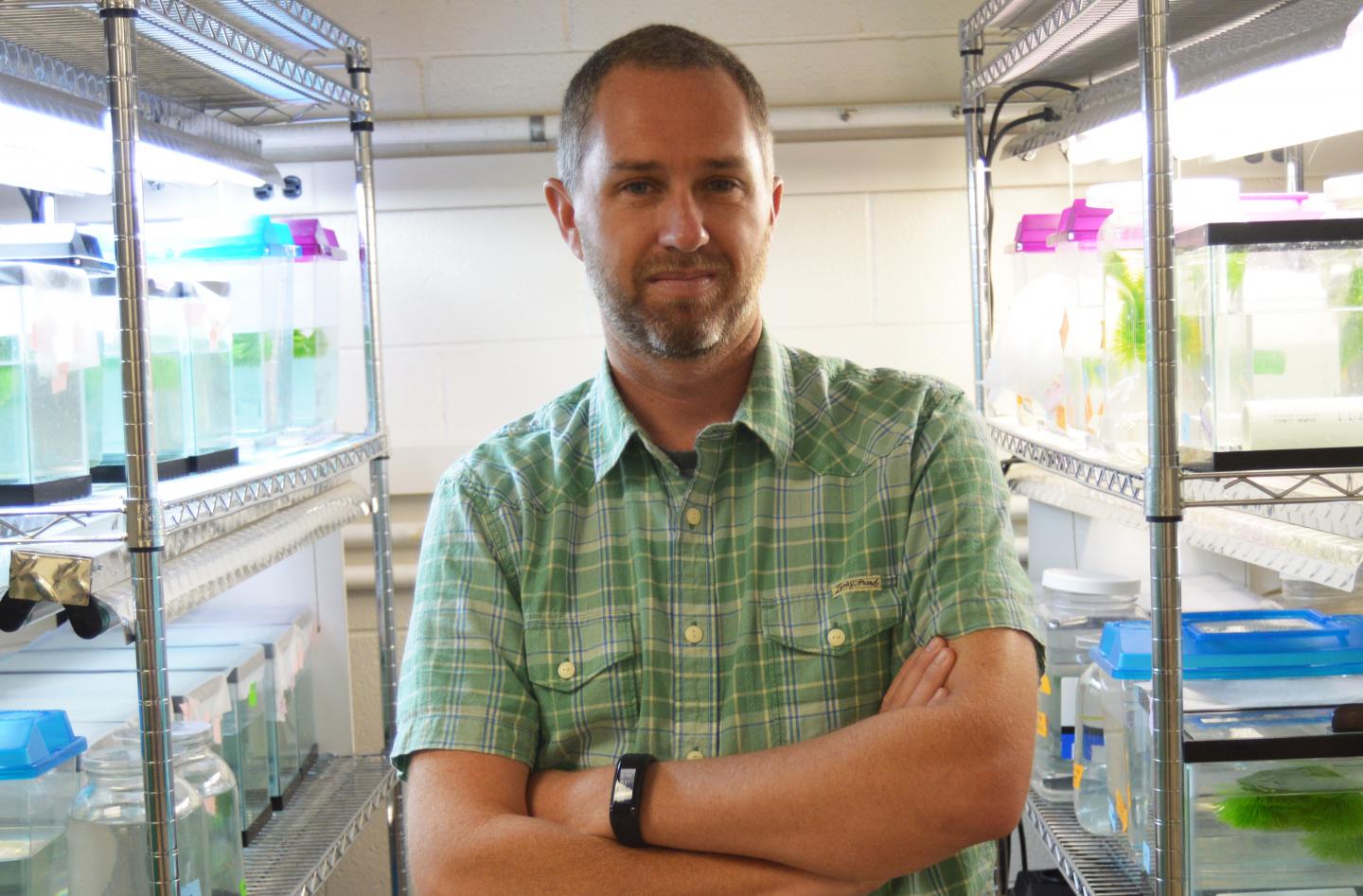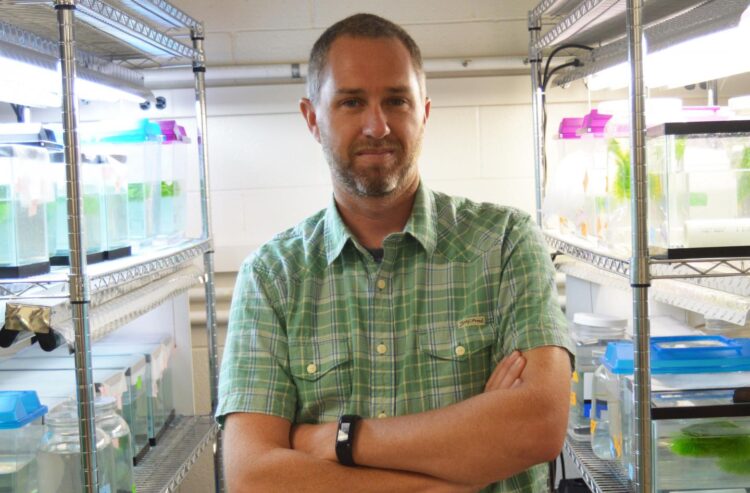UTA examining evolutionary effects of nuclear testing on preserved water flea eggs

Credit: The University of Texas at Arlington
A researcher of The University of Texas at Arlington could soon uncover the evolutionary effects of nuclear testing by resurrecting decades-old crustaceans.
Matthew Walsh, an associate professor of biology, traveled to Utah this summer to collect sediment cores containing the preserved eggs of Daphnia, or water fleas, from lakes in the fallout zone of nuclear testing done in the United States in the 1950s.
Each layer of the sediment core represents a distinct time period and contains a generation of water flea eggs that sunk to the lake floor. Walsh will hatch the eggs and measure the viability and traits of water fleas from before, during and after nuclear testing took place.
“We have no real experimental sense of the long-term evolutionary impacts of nuclear testing, only the common belief of nuclear-induced mutation,” Walsh said. “This process allows us to look at nuclear genetic impacts across decades, study their effects in real time and provide new insights into whether any nuclear-induced mutations degrade over time.”
Walsh is a co-principal investigator on a $200,000 EAGER grant from the National Science Foundation (NSF) that supports this project. NSF’s EAGER program was designed specifically for potentially transformative or exploratory research that investigates new subjects, different methods or interdisciplinary approaches.
The two-year EAGER grant overlaps with the remaining two years of Walsh’s five-year, $600,000 grant from the NSF’s Faculty Early Career Development, or CAREER, Program, for which he is also using Daphnia resurrection to address long-standing questions in evolutionary biology.
“In my doctoral studies, I became interested in the water flea as a vessel of investigation–they’re faster, smaller and easier to work with in a lab, and the concept of resurrection is just remarkably cool,” Walsh said. “It has been a longstanding goal of mine to leverage Daphnia in this way.”
Clay Clark, chair of the Department of Biology, said Walsh’s studies bolster the University’s portfolio in investigating and protecting the global environment.
“Not only is Matt’s use of resurrection a fascinating concept, but it stands to uncover a wealth of information about how the impact of human actions on our environment can or might affect generations to come,” Clark said. “Evidence uncovered through work like this can help make us better stewards of our earthly community and resources.”
###
Media Contact
Dana Jennings
[email protected]
Original Source
https:/





